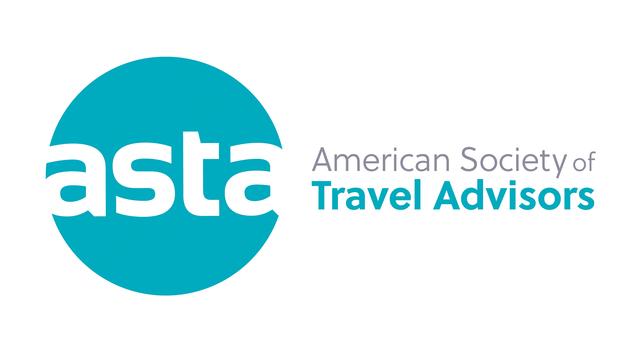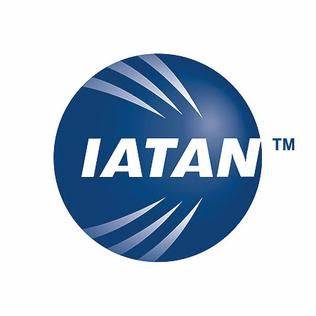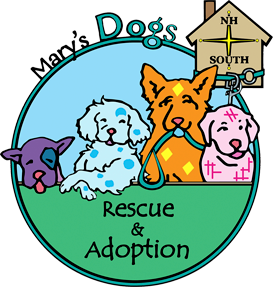Galapagos Escape - Solaris (Itinerary B)
Walk (and snorkel) with the animals of Genovesa, Santa Fe, San Cristóbal and more
With lumbering giant tortoises, playful sea lions and an aviary of swooping, squawking, soaring bird life, the Galapagos Islands is wildlife-watching heaven. For this five-day trip, it’s all aboard the Solaris, a first-class motor yacht, to cruise around the archipelago in the company of an expert naturalist. Along the way, we stop at a string of biologically diverse islands, including Genovesa, Santa Fe and San Cristóbal, with the chance to get out and explore on foot and by snorkelling. Expect moments worthy of a nature documentary and plenty of photo opportunities.
- Safari, Animals, and Wildlife
| Additional Offers |
ID: 8503341
|
ID: 8503343
|
ID: 8503344
|
ID: 8503346
|
ID: 8503348
|
ID: 8503354
|
|---|---|---|---|---|---|---|
|
|
|
|
|
|
|
|
|
ID: 8503341
|
ID: 8503343
|
ID: 8503344
|
ID: 8503346
|
ID: 8503348
|
ID: 8503354
|
Cruise around the Galapagos on the Solaris, a first-class motor yacht overseen by 10 crew members. On top is a spacious sundeck (come here for stretching views over the Pacific Ocean and islands) with sun loungers, a dining table and barbecue area.
Inside, there’s a lounge with a stocked bar and another dining space. Additionally, the vessel has 11 cabins: five singles and six twins (four with a queen bed and a single bed, two with a queen bed and a sofa bed); all have air conditioning and private bathrooms.
The experience is undoubtedly enhanced by the on-board naturalist, an expert on the wildlife of the Galapagos. The vessel also has four double sea kayaks and snorkeling equipment, which we can use on guided adventures.
Boat specifications:
First-class motor yacht
16-passenger capacity with five single cabins and six twin cabins
Crew: 10 and one naturalist guide
Length: 118ft (36m)
Beam: 52ft (9m)
Take a virtual tour of the Solaris: https://oniriccruises.com/views-360/solaris/SOLARIS/SOLARIS.html
Worth knowing
There are five dedicated single cabins on the Solaris; these can be booked by solo travellers with no additional supplement for the cabin.
Travelling between islands is often done overnight, so expect some cabin noise and movement.
On-board meals are plentiful with a wide choice of international and local cuisine. Breakfasts will usually consist of cheese, meats, eggs, cereal, toasts, yoghurts and fruits. Snacks are provided mid-morning and mid-afternoon. For lunches and dinner, soup usually precedes the main course.
Alcoholic drinks are available on board (approximately US$4 per beer, US$35 for a bottle of wine, around US$8 for selected cocktails) and the crew request you do not bring your own alcohol with you. Drinking water, tea, coffee and juice is freely available at no additional charge.
Vegetarians and vegans can be well catered for on this trip; please inform us before departure of any special dietary requests so our local team can be well prepared.
— Sunhat
— Sunscreen
— Strong-soled shoes for walking on the islands
— Torch (flashlight)
Due to the limited storage facilities on the boat, hard suitcases are difficult to store. We therefore recommend you take a soft holdall or rucksack. Your bag can be unpacked into the cabin storage and your holdall stowed away in the small space under the bed.
Internal flights in the destination country are subject to a weight limit of 44lb (20kg).
— Experience incredible wildlife viewing and photographic opportunities with near-tame animals
— Enjoy a high chance of spotting waved albatrosses, blue- and red-footed boobies, giant tortoises, sea lions and marine iguanas
Start hotel: Hotel Wyndham Quito Airport, Parroquia Tababela SN Via A Yaruqui, Quito 170183, Ecuador
Phone: +593 2-395-8000
Recommended arrival time: You can arrive at any time today
Airport: Mariscal Sucre Quito International Airport (UIO)
Getting to the start hotel
The start hotel is approximately five minutes’ drive from the airport. Exodus provides free arrival transfers to the start hotel from the airport for all customers. If you would like further information on joining this trip, please speak to your sales representative.
Catching your return flight
The trip ends at Guayaquil Airport, where it's possible to connect with international flights from 6pm onwards. Please speak to your sales representative if you need more information.
Please note, unless specified otherwise, the arrival transfer will be to the start (or pre-tour) hotel and will be on the date on which the tour starts; transfers to other hotels in the same city and/or on different dates may attract an extra charge. Transfers should be booked with your sales representative at least two weeks before the tour starts.
— Single accommodation (available on request)
— Visas or vaccinations
— Compulsory Galapagos taxes US$220, paid locally
— Travel by internal flight, first-class motor yacht and minibus
— Group normally 2 to 16, plus leader. Minimum age: 12
On this trip there is a compulsory Galapagos Tax of US$200 which can only be paid locally in cash (US dollars) and will be collected by the National Park Service on arrival in the Galapagos. In addition, all visitors to the Galapagos are required to obtain an immigration control card (Ingala card) in mainland Ecuador – these cost US$20 per person and will be supplied and paid for locally in cash (US dollars). Please note, Galapagos taxes are subject to increase without notice, and any such increase will be collected in Quito or Baltra.
All food is provided in the Galapagos. For the days in Quito, we provide breakfast only and you should budget roughly US$10-US$15 for lunch and US$15-US$20 for main evening meals (22% tax included). It is possible to eat more cheaply or more expensively than this, and the cost estimates don’t include alcohol. Tipping is customary in restaurants and cafes throughout Ecuador, and we recommend leaving a tip between 10% and 15% of the total bill. Drinks and incidentals are quite expensive in the Galapagos as everything is imported from the mainland.
Free-to-use snorkelling equipment (mask, snorkel and fins) is available on board but wetsuit rentals are charged at US$50 for the entire cruise. Additional fees apply if the equipment is damaged. Alternatively, bring your own equipment to ensure a good fit.
To show appreciation to local guides on the mainland, a tip of around US$7-US$9 per day from each group member is sufficient. Drivers and other local staff may be given closer to US$5-US$8 in tips per day.
It is also usual for groups to tip the boat crew in addition to the guide. It would be reasonable for each group member to contribute about US$20-US$25 a day for the crew and staff in the Galapagos. You may also wish to tip the naturalist guides directly and this is at your discretion, but US$12-US$15 per person per day would be a good gratuity
This trip is great for wildlife enthusiasts, photographers, and those with an interest in history or geology. Though you do not need to be particularly fit, there will be some walking on rough ground and sharp volcanic rocks due to the volcanic nature of the Galapagos Islands. The ability to withstand high temperatures and to swim will maximise your enjoyment of the trip. Due to local regulations, we have specific time slots for making our landings and site visits. There is usually very little disruption to the schedule, but this can mean little room for deviation in the event of poor weather or other circumstances.
Landings: Each day in the Galapagos will feature a mixture of walking, snorkelling and exploring the islands by boat. To get closer to the designated landing sites on each of the islands, we disembark into small pangas (motorised dinghies). Landings are divided into two types – wet and dry. For dry landings, the panga will take you right up to a landing stage or rocky outcrop where you can disembark without getting wet. However, where there is no landing stage, the panga will stop close to a beach and you will be expected to walk through shallow water (generally no more than ankle-deep) to the shore. The leader will always advise on conditions prior to leaving and it is possible to skip any excursion if you would rather relax on the boat.
Snorkelling: There are plenty of snorkelling opportunities in the Galapagos and this is one of the best ways to experience the marine life. A mask and snorkel will reveal an exciting underwater world with sea lions, rays, turtles, marine iguanas, and a colourful array of fish. On most days, there will be one or two snorkelling sessions. Snorkelling in the Galapagos does not require any special skills; however, at times, you will be snorkelling in open water where there are fairly strong currents. Before going into the water, the guide will evaluate the strength of the currents and the general sea condition to ensure they are right for a safe and enjoyable activity. The dinghy will remain very close at all times; if you get tired or feel like coming out of the water, you only have to raise your arm and they will pick you up so you can rest for a while before going back in or stay in the dinghy until it is time to return to the boat. Snorkelling equipment (snorkel, fins and masks) is provided; however, it is advisable to wear a wetsuit, which not only protects you from the cold but also makes floating much easier without as much effort.
Travellers: We offer this Galapagos cruise in conjunction with our Ecuadorian partners, and Exodus participants will join an international group, not all of whom have booked through Exodus. Occasionally some of these may be younger than Exodus’ minimum age for this trip.
Deposit terms
At the time of booking, we will ask you for the standard Exodus deposit plus an extra 10% of the trip cost to secure your space on the boat. If for any reason we are unable to secure the space and we have to cancel the trip, you will receive a full refund.
Cancellation terms
Due to the nature of this trip, it has slightly different cancellation charges to those listed in the standard Exodus Booking Conditions. After booking, if cancelling your travel arrangements, you will have to pay cancellation charges as follows:
From 90 days to 65 days before departure – loss of deposit (20%)
64 days or less (or failure to join the trip) – 100% of the trip cost
Islands visited on this itinerary:
North Seymour: A tiny island with a huge sea lion colony and a very large colony of frigatebirds – it’s one of the best places to see the males displaying their bright red pouches during mating season. You may also get to see one of these relatively aggressive birds performing aerial tricks as they steal food from boobies or gulls.
Santa Cruz: The second-largest island in the archipelago, Santa Cruz is home to Puerto Ayora – where most Galapagos ships are docked for embarkation – and the Charles Darwin Research Station, which conducts tortoise research programmes and is heavily involved in the management and conservation of the islands along with the national park authorities. The Santa Cruz highlands are much greener than the dry lowlands of the other islands and are home to freely roaming tortoises. In common with the rest of the group, Santa Cruz has many interesting volcanic features, such as pit craters and lava tunnels, and there is also a flamingo lagoon at Cerro Dragón.
Genovesa: Renowned for the sheer number of birds living on its volcanic cliffs, Genovesa is a true paradise for birdwatchers. There are large populations of red-footed boobies, storm petrels, frigatebirds, tropic birds and nocturnal swallow-tailed gulls. Prince Philip’s Steps lead to a plateau where the visitor is almost totally surrounded by different bird species. It’s not just the land that provides a great natural habitat – the nutrient-rich waters make for great snorkelling too.
Santa Fe: The dense vegetation of Santa Fe is made up of some of the largest species of cactus, including a forest of prickly pear. Large numbers of the endemic Santa Fe land iguana reside here – one of the largest land iguanas on the islands.
South Plaza: A tiny island formed of lava and carpeted with cacti and plants that give it a luxurious red surface. There is abundant bird life here (including tropic birds and swallow-tailed gulls), plus a large number of land and marine iguanas that feed on the cacti.
San Cristóbal: The easternmost island of the archipelago and the first landing point for Charles Darwin in 1835. The provincial capital of the Galapagos Islands, Puerto Baquerizo Moreno, is on San Cristóbal, and the town is home to the excellent Galapagos Interpretation Centre. Popular sites for visitors include El Junco Lake (one of the few freshwater lagoons in the archipelago), Frigatebird Hill (unsurprisingly named for the large colonies of magnificent and great frigatebirds), and Kicker Rock, a towering split rock that rises more than 330ft (100m) from the ocean. The highland cloud forests provide a natural habitat for giant tortoises. Huge numbers of sea lions are also present on San Cristóbal and nearby Isla Lobos, reachable by boat, is a big nesting site for blue-footed boobies.
Dry season
Generally speaking, late May to early December is the cooler dry season. In this period, it is not necessarily dry, as there is a persistent light mist (garua) and often light drizzle, and the higher mountain slopes are covered in cloud and fog or rain. The winds are in the southeast and are higher than at other times, so seas can sometimes be choppy and anyone worried about seasickness might want to avoid it. Daytime maximum temperatures are 27C-31C (81F-88F), the cooler months being July to November. In July and August, the fairly strong winds introduce a chill factor, and it can feel quite cold at nights, though throughout the year the official night temperatures are 19C-24C (66F-75F).
Wet season
Depending on how close the convergence of the two currents comes to the Galapagos, there may or may not be a wet season from January to April or May. Approximately every seven years the El Nino current actually hits the islands and there will be heavy rains in these months. In other years, rain usually falls sporadically from otherwise clear skies. The ocean temperatures are higher with generally calm seas and strong sunshine: pleasant, but potentially very hot. Apart from an El Nino year, the weather is usually better from December to January and April to May than at other times even if there is some rain. Most people would regard these months as the best time to go.
There are plenty of wildlife highlights throughout the year:
January: Nesting land birds; green sea turtles arrive to lay eggs on the beaches
February: Nesting marine iguanas on Santa Cruz
March: The bright red throat pouches of frigatebirds are inflated during mating season on Genovesa and San Cristobal
April: Green sea turtle eggs begin to hatch
May: Courtship of blue-footed boobies begins on North Seymour
June: Giant tortoises migrate to the lowlands and start nesting; migrating birds stop in the Galapagos to rest; migrating humpback whales can often be seen around the western islands
July: Dolphins and whales are more likely to be seen around the western islands
August: Nazca boobies nest on Genovesa; sea lions start giving birth to pups
September: Penguins seen in the water when snorkelling around Bartolome
October: Galapagos fur seals start mating; blue-footed boobies start raising chicks
November: Curious sea lion pups found in the water among snorkellers
December: Mating green sea turtles; waved albatross chicks fledge
In Quito, it should be warm by day and generally dry. Maximum daytime temperatures are almost constant throughout the year at 20C (68F) and nights at 8C (46F). Expect some rain in February-May and October-November. Storms, though heavy, are generally short.
— Sunhat
— Sunscreen
— Strong-soled shoes for walking on the islands
— Torch (flashlight)
Due to the limited storage facilities on the boat, hard suitcases are difficult to store. We therefore recommend you take a soft holdall or rucksack. Your bag can be unpacked into the cabin storage and your holdall stowed away in the small space under the bed.
Internal flights in the destination country are subject to a weight limit of 44lb (20kg).
Cruise around the Galapagos on the Solaris, a first-class motor yacht overseen by 10 crew members. On top is a spacious sundeck (come here for stretching views over the Pacific Ocean and islands) with sun loungers, a dining table and barbecue area.
Inside, there’s a lounge with a stocked bar and another dining space. Additionally, the vessel has 11 cabins: five singles and six twins (four with a queen bed and a single bed, two with a queen bed and a sofa bed); all have air conditioning and private bathrooms.
The experience is undoubtedly enhanced by the on-board naturalist, an expert on the wildlife of the Galapagos. The vessel also has four double sea kayaks and snorkeling equipment, which we can use on guided adventures.
Boat specifications:
First-class motor yacht
16-passenger capacity with five single cabins and six twin cabins
Crew: 10 and one naturalist guide
Length: 118ft (36m)
Beam: 52ft (9m)
Take a virtual tour of the Solaris: https://oniriccruises.com/views-360/solaris/SOLARIS/SOLARIS.html
Worth knowing
There are five dedicated single cabins on the Solaris; these can be booked by solo travellers with no additional supplement for the cabin.
Travelling between islands is often done overnight, so expect some cabin noise and movement.
On-board meals are plentiful with a wide choice of international and local cuisine. Breakfasts will usually consist of cheese, meats, eggs, cereal, toasts, yoghurts and fruits. Snacks are provided mid-morning and mid-afternoon. For lunches and dinner, soup usually precedes the main course.
Alcoholic drinks are available on board (approximately US$4 per beer, US$35 for a bottle of wine, around US$8 for selected cocktails) and the crew request you do not bring your own alcohol with you. Drinking water, tea, coffee and juice is freely available at no additional charge.
Vegetarians and vegans can be well catered for on this trip; please inform us before departure of any special dietary requests so our local team can be well prepared.
— Sunhat
— Sunscreen
— Strong-soled shoes for walking on the islands
— Torch (flashlight)
Due to the limited storage facilities on the boat, hard suitcases are difficult to store. We therefore recommend you take a soft holdall or rucksack. Your bag can be unpacked into the cabin storage and your holdall stowed away in the small space under the bed.
Internal flights in the destination country are subject to a weight limit of 44lb (20kg).
— Experience incredible wildlife viewing and photographic opportunities with near-tame animals
— Enjoy a high chance of spotting waved albatrosses, blue- and red-footed boobies, giant tortoises, sea lions and marine iguanas
Start hotel: Hotel Wyndham Quito Airport, Parroquia Tababela SN Via A Yaruqui, Quito 170183, Ecuador
Phone: +593 2-395-8000
Recommended arrival time: You can arrive at any time today
Airport: Mariscal Sucre Quito International Airport (UIO)
Getting to the start hotel
The start hotel is approximately five minutes’ drive from the airport. Exodus provides free arrival transfers to the start hotel from the airport for all customers. If you would like further information on joining this trip, please speak to your sales representative.
Catching your return flight
The trip ends at Guayaquil Airport, where it's possible to connect with international flights from 6pm onwards. Please speak to your sales representative if you need more information.
Please note, unless specified otherwise, the arrival transfer will be to the start (or pre-tour) hotel and will be on the date on which the tour starts; transfers to other hotels in the same city and/or on different dates may attract an extra charge. Transfers should be booked with your sales representative at least two weeks before the tour starts.
— Single accommodation (available on request)
— Visas or vaccinations
— Compulsory Galapagos taxes US$220, paid locally
— Travel by internal flight, first-class motor yacht and minibus
— Group normally 2 to 16, plus leader. Minimum age: 12
On this trip there is a compulsory Galapagos Tax of US$200 which can only be paid locally in cash (US dollars) and will be collected by the National Park Service on arrival in the Galapagos. In addition, all visitors to the Galapagos are required to obtain an immigration control card (Ingala card) in mainland Ecuador – these cost US$20 per person and will be supplied and paid for locally in cash (US dollars). Please note, Galapagos taxes are subject to increase without notice, and any such increase will be collected in Quito or Baltra.
All food is provided in the Galapagos. For the days in Quito, we provide breakfast only and you should budget roughly US$10-US$15 for lunch and US$15-US$20 for main evening meals (22% tax included). It is possible to eat more cheaply or more expensively than this, and the cost estimates don’t include alcohol. Tipping is customary in restaurants and cafes throughout Ecuador, and we recommend leaving a tip between 10% and 15% of the total bill. Drinks and incidentals are quite expensive in the Galapagos as everything is imported from the mainland.
Free-to-use snorkelling equipment (mask, snorkel and fins) is available on board but wetsuit rentals are charged at US$50 for the entire cruise. Additional fees apply if the equipment is damaged. Alternatively, bring your own equipment to ensure a good fit.
To show appreciation to local guides on the mainland, a tip of around US$7-US$9 per day from each group member is sufficient. Drivers and other local staff may be given closer to US$5-US$8 in tips per day.
It is also usual for groups to tip the boat crew in addition to the guide. It would be reasonable for each group member to contribute about US$20-US$25 a day for the crew and staff in the Galapagos. You may also wish to tip the naturalist guides directly and this is at your discretion, but US$12-US$15 per person per day would be a good gratuity
This trip is great for wildlife enthusiasts, photographers, and those with an interest in history or geology. Though you do not need to be particularly fit, there will be some walking on rough ground and sharp volcanic rocks due to the volcanic nature of the Galapagos Islands. The ability to withstand high temperatures and to swim will maximise your enjoyment of the trip. Due to local regulations, we have specific time slots for making our landings and site visits. There is usually very little disruption to the schedule, but this can mean little room for deviation in the event of poor weather or other circumstances.
Landings: Each day in the Galapagos will feature a mixture of walking, snorkelling and exploring the islands by boat. To get closer to the designated landing sites on each of the islands, we disembark into small pangas (motorised dinghies). Landings are divided into two types – wet and dry. For dry landings, the panga will take you right up to a landing stage or rocky outcrop where you can disembark without getting wet. However, where there is no landing stage, the panga will stop close to a beach and you will be expected to walk through shallow water (generally no more than ankle-deep) to the shore. The leader will always advise on conditions prior to leaving and it is possible to skip any excursion if you would rather relax on the boat.
Snorkelling: There are plenty of snorkelling opportunities in the Galapagos and this is one of the best ways to experience the marine life. A mask and snorkel will reveal an exciting underwater world with sea lions, rays, turtles, marine iguanas, and a colourful array of fish. On most days, there will be one or two snorkelling sessions. Snorkelling in the Galapagos does not require any special skills; however, at times, you will be snorkelling in open water where there are fairly strong currents. Before going into the water, the guide will evaluate the strength of the currents and the general sea condition to ensure they are right for a safe and enjoyable activity. The dinghy will remain very close at all times; if you get tired or feel like coming out of the water, you only have to raise your arm and they will pick you up so you can rest for a while before going back in or stay in the dinghy until it is time to return to the boat. Snorkelling equipment (snorkel, fins and masks) is provided; however, it is advisable to wear a wetsuit, which not only protects you from the cold but also makes floating much easier without as much effort.
Travellers: We offer this Galapagos cruise in conjunction with our Ecuadorian partners, and Exodus participants will join an international group, not all of whom have booked through Exodus. Occasionally some of these may be younger than Exodus’ minimum age for this trip.
Deposit terms
At the time of booking, we will ask you for the standard Exodus deposit plus an extra 10% of the trip cost to secure your space on the boat. If for any reason we are unable to secure the space and we have to cancel the trip, you will receive a full refund.
Cancellation terms
Due to the nature of this trip, it has slightly different cancellation charges to those listed in the standard Exodus Booking Conditions. After booking, if cancelling your travel arrangements, you will have to pay cancellation charges as follows:
From 90 days to 65 days before departure – loss of deposit (20%)
64 days or less (or failure to join the trip) – 100% of the trip cost
Islands visited on this itinerary:
North Seymour: A tiny island with a huge sea lion colony and a very large colony of frigatebirds – it’s one of the best places to see the males displaying their bright red pouches during mating season. You may also get to see one of these relatively aggressive birds performing aerial tricks as they steal food from boobies or gulls.
Santa Cruz: The second-largest island in the archipelago, Santa Cruz is home to Puerto Ayora – where most Galapagos ships are docked for embarkation – and the Charles Darwin Research Station, which conducts tortoise research programmes and is heavily involved in the management and conservation of the islands along with the national park authorities. The Santa Cruz highlands are much greener than the dry lowlands of the other islands and are home to freely roaming tortoises. In common with the rest of the group, Santa Cruz has many interesting volcanic features, such as pit craters and lava tunnels, and there is also a flamingo lagoon at Cerro Dragón.
Genovesa: Renowned for the sheer number of birds living on its volcanic cliffs, Genovesa is a true paradise for birdwatchers. There are large populations of red-footed boobies, storm petrels, frigatebirds, tropic birds and nocturnal swallow-tailed gulls. Prince Philip’s Steps lead to a plateau where the visitor is almost totally surrounded by different bird species. It’s not just the land that provides a great natural habitat – the nutrient-rich waters make for great snorkelling too.
Santa Fe: The dense vegetation of Santa Fe is made up of some of the largest species of cactus, including a forest of prickly pear. Large numbers of the endemic Santa Fe land iguana reside here – one of the largest land iguanas on the islands.
South Plaza: A tiny island formed of lava and carpeted with cacti and plants that give it a luxurious red surface. There is abundant bird life here (including tropic birds and swallow-tailed gulls), plus a large number of land and marine iguanas that feed on the cacti.
San Cristóbal: The easternmost island of the archipelago and the first landing point for Charles Darwin in 1835. The provincial capital of the Galapagos Islands, Puerto Baquerizo Moreno, is on San Cristóbal, and the town is home to the excellent Galapagos Interpretation Centre. Popular sites for visitors include El Junco Lake (one of the few freshwater lagoons in the archipelago), Frigatebird Hill (unsurprisingly named for the large colonies of magnificent and great frigatebirds), and Kicker Rock, a towering split rock that rises more than 330ft (100m) from the ocean. The highland cloud forests provide a natural habitat for giant tortoises. Huge numbers of sea lions are also present on San Cristóbal and nearby Isla Lobos, reachable by boat, is a big nesting site for blue-footed boobies.
Dry season
Generally speaking, late May to early December is the cooler dry season. In this period, it is not necessarily dry, as there is a persistent light mist (garua) and often light drizzle, and the higher mountain slopes are covered in cloud and fog or rain. The winds are in the southeast and are higher than at other times, so seas can sometimes be choppy and anyone worried about seasickness might want to avoid it. Daytime maximum temperatures are 27C-31C (81F-88F), the cooler months being July to November. In July and August, the fairly strong winds introduce a chill factor, and it can feel quite cold at nights, though throughout the year the official night temperatures are 19C-24C (66F-75F).
Wet season
Depending on how close the convergence of the two currents comes to the Galapagos, there may or may not be a wet season from January to April or May. Approximately every seven years the El Nino current actually hits the islands and there will be heavy rains in these months. In other years, rain usually falls sporadically from otherwise clear skies. The ocean temperatures are higher with generally calm seas and strong sunshine: pleasant, but potentially very hot. Apart from an El Nino year, the weather is usually better from December to January and April to May than at other times even if there is some rain. Most people would regard these months as the best time to go.
There are plenty of wildlife highlights throughout the year:
January: Nesting land birds; green sea turtles arrive to lay eggs on the beaches
February: Nesting marine iguanas on Santa Cruz
March: The bright red throat pouches of frigatebirds are inflated during mating season on Genovesa and San Cristobal
April: Green sea turtle eggs begin to hatch
May: Courtship of blue-footed boobies begins on North Seymour
June: Giant tortoises migrate to the lowlands and start nesting; migrating birds stop in the Galapagos to rest; migrating humpback whales can often be seen around the western islands
July: Dolphins and whales are more likely to be seen around the western islands
August: Nazca boobies nest on Genovesa; sea lions start giving birth to pups
September: Penguins seen in the water when snorkelling around Bartolome
October: Galapagos fur seals start mating; blue-footed boobies start raising chicks
November: Curious sea lion pups found in the water among snorkellers
December: Mating green sea turtles; waved albatross chicks fledge
In Quito, it should be warm by day and generally dry. Maximum daytime temperatures are almost constant throughout the year at 20C (68F) and nights at 8C (46F). Expect some rain in February-May and October-November. Storms, though heavy, are generally short.
— Sunhat
— Sunscreen
— Strong-soled shoes for walking on the islands
— Torch (flashlight)
Due to the limited storage facilities on the boat, hard suitcases are difficult to store. We therefore recommend you take a soft holdall or rucksack. Your bag can be unpacked into the cabin storage and your holdall stowed away in the small space under the bed.
Internal flights in the destination country are subject to a weight limit of 44lb (20kg).
About Exodus Adventure Travels

Improving life for People, Places & Planet
After 50-years of delivering world-class adventures, trips and tours, we know better than most how awe-inspiring, horizon-expanding, and life-enriching travel can be. And at Exodus Adventure Travels we firmly believe travel should improve life for the people and places we visit too.
Our People, Places & Planet plan lays out the ways in which we persistently and passionately seek to improve life through travel — for the places we visit, people we meet, and the planet we explore. This includes taking a nature positive approach which focuses on our adventures giving back more to our planet and its ecosystems than they take.
About Exodus Adventure Travels

Improving life for People, Places & Planet
After 50-years of delivering world-class adventures, trips and tours, we know better than most how awe-inspiring, horizon-expanding, and life-enriching travel can be. And at Exodus Adventure Travels we firmly believe travel should improve life for the people and places we visit too.
Our People, Places & Planet plan lays out the ways in which we persistently and passionately seek to improve life through travel — for the places we visit, people we meet, and the planet we explore. This includes taking a nature positive approach which focuses on our adventures giving back more to our planet and its ecosystems than they take.



















